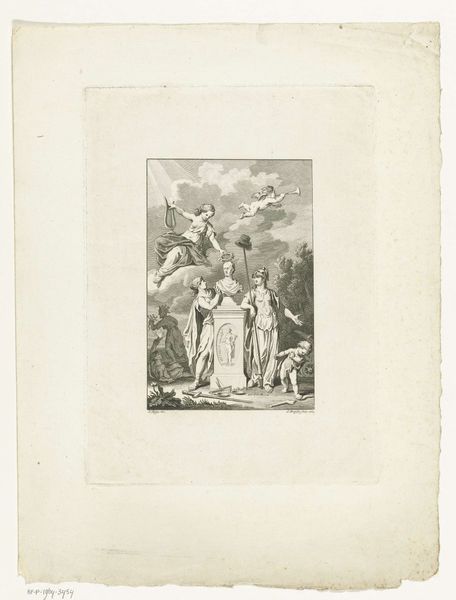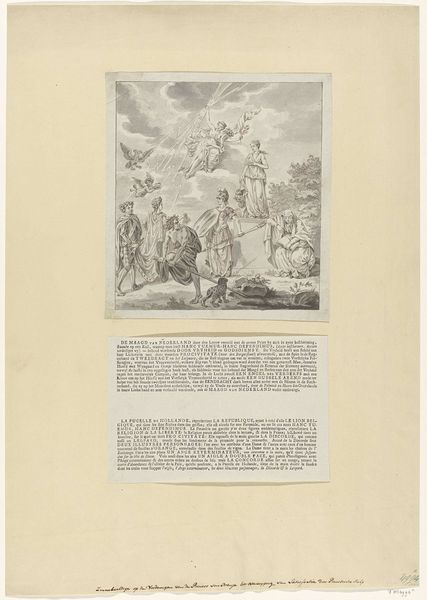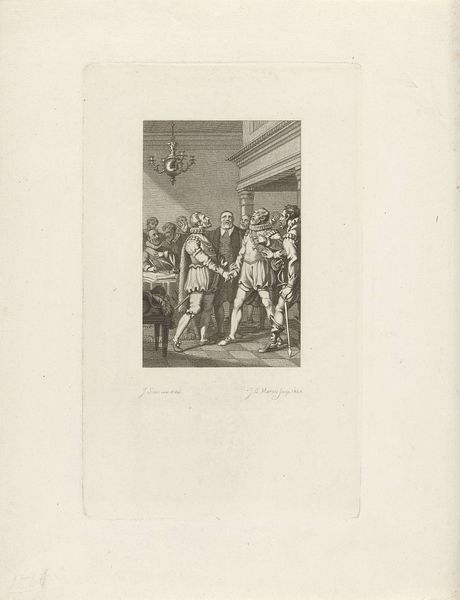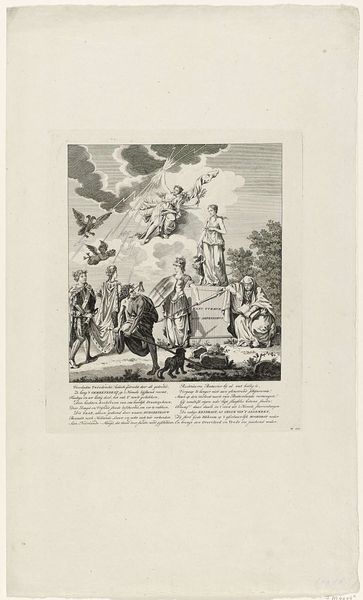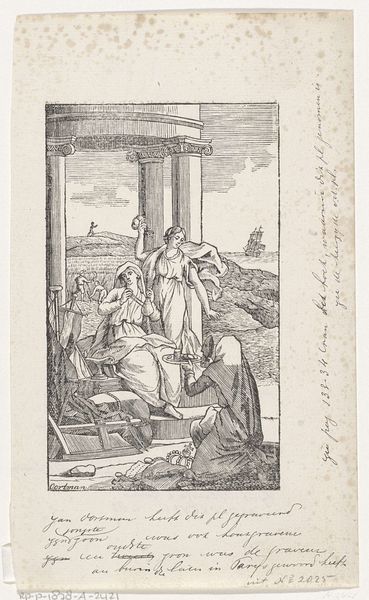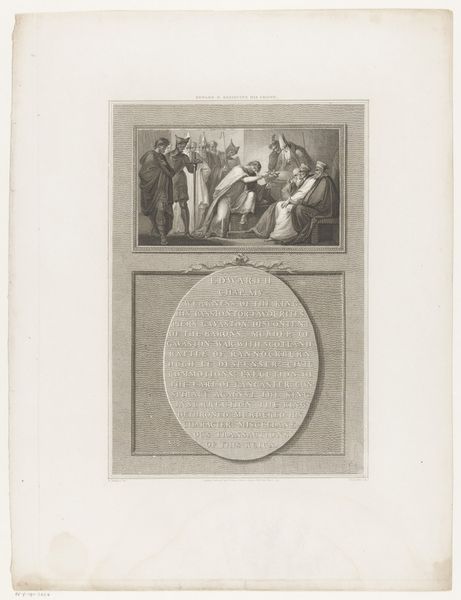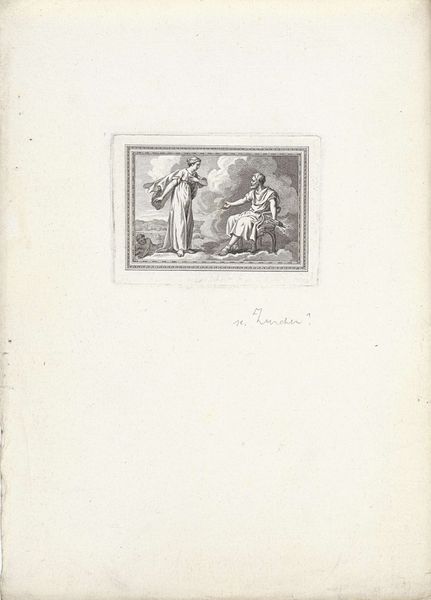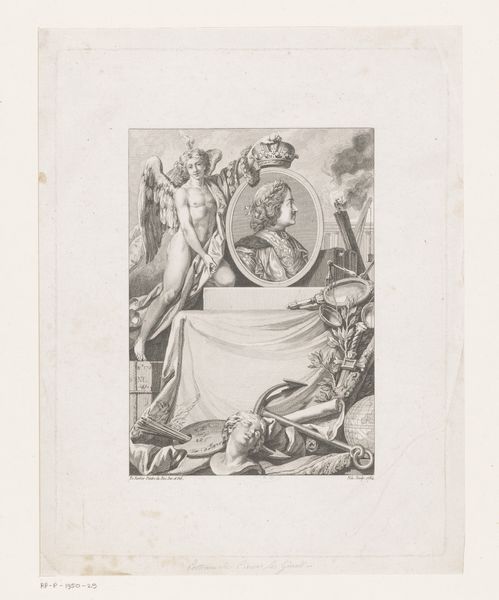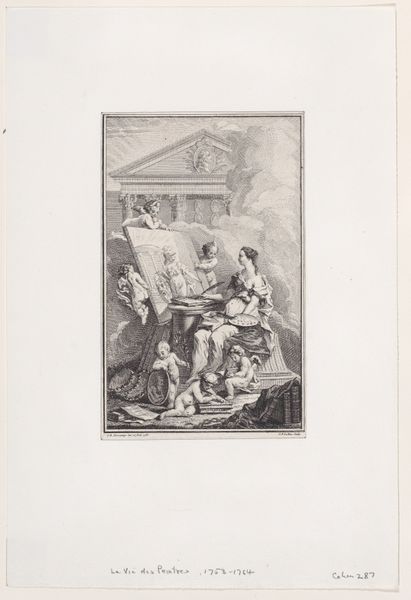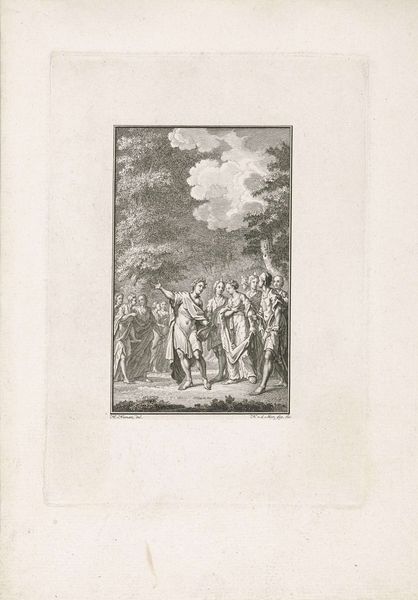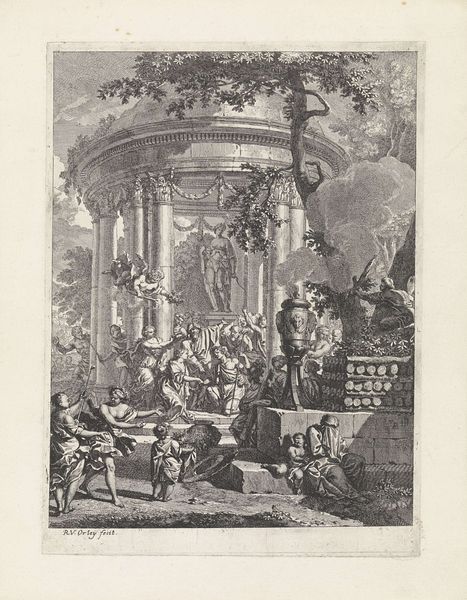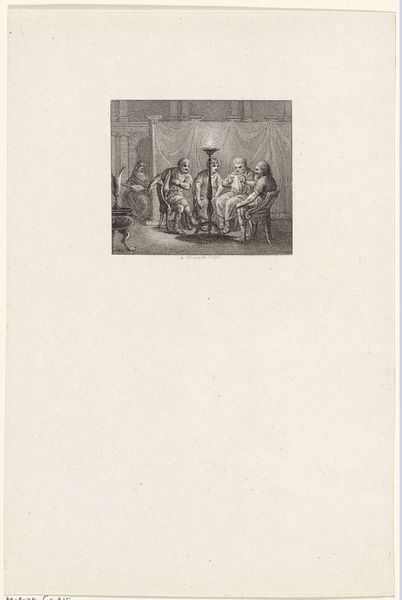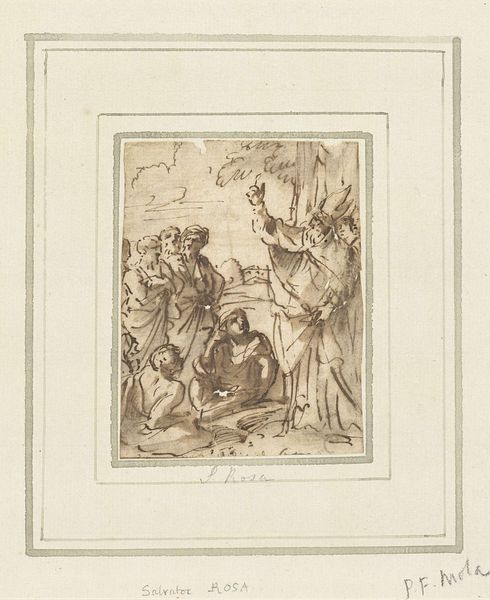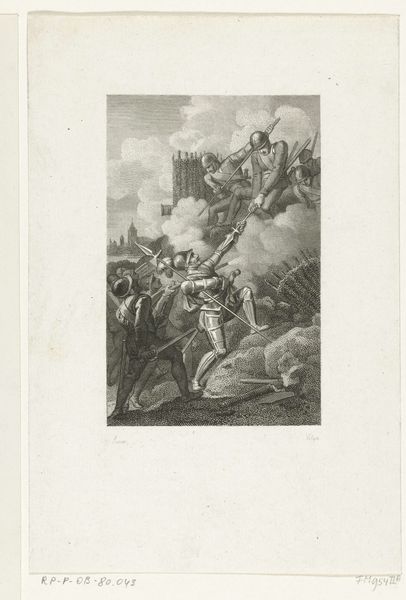
Titelpagina voor: Kornelis de Vogel, Katechismus van het stadhouderschap, 1786 1785 - 1786
0:00
0:00
print, engraving
#
neoclacissism
#
allegory
# print
#
old engraving style
#
figuration
#
personal sketchbook
#
line
#
cityscape
#
history-painting
#
engraving
Dimensions: height 208 mm, width 140 mm
Copyright: Rijks Museum: Open Domain
This frontispiece for Kornelis de Vogel's "Catechism of Stadtholdership," made in 1786 by an anonymous artist, presents a symbolic scene steeped in classical imagery. We observe a classical building illuminated by divine rays, toward which figures, perhaps Muses, proceed. The temple, a classical structure, is not merely architectural; it embodies the ideals of civic virtue and order harking back to ancient Greece and Rome, signaling a connection to historical precedents of governance. This harking back is what I call the 'survival of antiquity'. The stadtholder stands before it, and we are reminded of similar figures in Roman imperial portraiture adopting the pose of authority and legitimacy. Consider the Muses, who, in their partially draped state, appear to be offering laurel wreaths to the figure. This gesture, echoed across centuries from ancient rituals of honor to Renaissance celebrations of genius, carries an emotional weight that is hard to ignore. These motifs, gestures, and architectural symbols evoke a collective memory, tapping into subconscious processes and engaging viewers on a deep, almost instinctual level. The cyclical progression of symbols reminds us that history is never truly past; it resurfaces, evolves, and takes on new meanings.
Comments
No comments
Be the first to comment and join the conversation on the ultimate creative platform.
